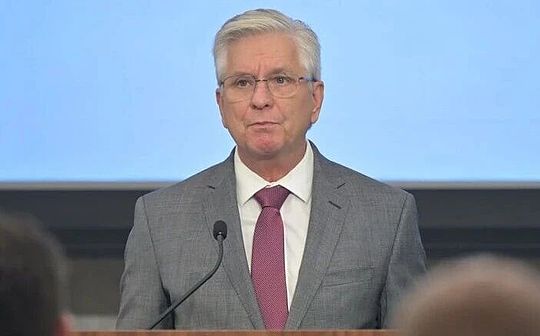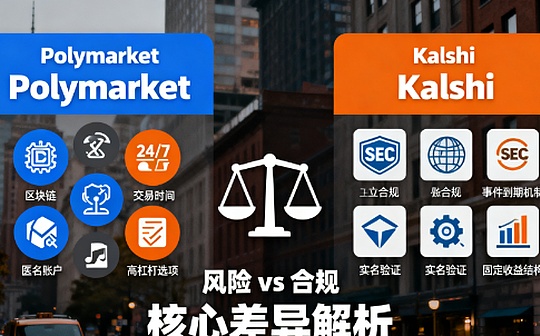
On October 21, Federal Reserve Board Governor Waller delivered an important speech titled “Embracing New Technologies and New Participants in the Payment Field” at the “Payment Innovation” conference hosted by the Federal Reserve Board.
There are two points worthy of attention in the speech.First, the Federal Reserve has actively participated in the Crypto revolution.Waller said that we no longer view the DeFi industry with suspicion or disdain.Waller declared: The Federal Reserve will actively participate in this change.
Second, Waller announced that the Federal Reserve is proposing a new type of limited access master account (or what he called a “streamlined master account”), which would allow all legally qualified institutions to directly access the Federal Reserve’s payment channels without relying on partner banks.Under such regulations, these institutions would not be able to use all the services of the master account, such as borrowing services from the Federal Reserve.But every legally qualified entity will be able to obtain a master account, and the regulations governing eligibility will not change.Essentially, this new streamlined master account will allow the Fed to give the green light to innovative banks, including fintech companies, stablecoin issuers and other payments companies.
According to Crypto In America reporter Eleanor Terrett’s report on the scene, this is of great significance to companies like Custodiabank and Krakenfx, which have been trying to obtain the Fed’s main account for years, with Custodia even taking the Fed to court.The move could also speed up the process of obtaining accounts for companies such as Ripple and Anchorage, which have already submitted applications this year.
The following is the full text of the speech:
Speaker: Governor Christopher J. Waller
Susan, thank you.Good morning everyone.It is a pleasure to welcome you all to the Board of Governors of the Federal Reserve System for our inaugural Payments Innovation Conference.I have two purposes for hosting this conference.First, I want to focus on the new technologies emerging in the decentralized finance and cryptocurrency space and how they fit into the mainstream payments ecosystem.I look forward to a lively discussion on this between traditional payment giants and emerging forces in decentralized finance.Second, I hope to send a signal: The Fed has entered a new era in the payments field—we no longer view the decentralized finance industry with suspicion or contempt.Instead, today we invite you to join in a conversation about the future of payments in America, taking place right here on our home turf—a conversation that would have been unimaginable just a few years ago.
As we all know, the technology-driven payment revolution is in full swing, and I hereby solemnly declare that the Federal Reserve will actively participate in this revolution.
Many technological breakthroughs are reshaping the payment system: stablecoins and tokenized assets based on distributed ledger technology; the rapid popularity of artificial intelligence (AI); and the increasing integration of these innovations with the traditional financial ecosystem.This includes the institutions and infrastructure that support our country’s economic security and efficient payment system, and of course the Federal Reserve itself.This payments revolution is driving change across the board, and in a moment I’ll elaborate on some of the new ideas the Federal Reserve is working on to support these innovations.
I have previously discussed the two basic models of payment innovation in the market economy.One is private sector-driven innovation.The vast majority of innovation originates from the private sector – which has the strongest incentives and conditions to allocate resources and take risks to explore new technologies.The second model is when public sector agencies such as the Federal Reserve build platforms and provide services to help the private sector expand new services to customers more conveniently and quickly.Such initiatives should only be implemented to meet specific market needs and to a limited extent.Public institutions, including the Federal Reserve, should take a position that recognizes and embraces private sector innovation that can improve the payment system while maintaining the security and stability of the payment system.These elements of security and stability are as critical to a new generation of innovators as they are to traditional institutions.
Allow me to step back for a moment and remind you how we got to where we are today.Since its inception, the Federal Reserve System has worked with the private sector to improve the efficiency of the payment and settlement system.From its earliest stages, the clearing services provided by the Reserve Bank have eliminated the need for daily cash transport in armed escort vehicles.Long before we started talking about “payments rails”—the payments infrastructure that drives today’s innovation—the Federal Reserve was running trains on steel rails to deliver and clear paper checks across the country.In the early 20th century, the Federal Wire System (Fedwire) began conducting bank-to-bank transfers over telegraph lines.Today, we have multiple infrastructures supporting real-time inter-bank transfer settlement.
This conference will focus on private sector-driven innovation.We bring together 100 private sector innovators who are using cutting-edge technology to create new possibilities in payments.Experts attending the conference are committed to integrating traditional financial payment tracks with distributed ledger technology, developing new products and services in the digital asset ecosystem, and promoting the application of artificial intelligence in the payment field.
Notably, companies participating in these innovations range from banks, asset managers, retail payment institutions, technology companies, and native crypto fintech companies.This shows that distributed ledgers and crypto-assets are no longer fringe technologies, but are increasingly integrated into the cornerstone of the payment and financial system.
Before I listen to what the innovators have to say, I would like to explain the role of the Federal Reserve in supporting the private sector: both as a coordinator to solve cooperation problems and to operate the core payment and settlement infrastructure.We are more focused on the future and accumulate experience for our own payment system through practical research in the intersection of tokenization, smart contracts, and artificial intelligence and payment.The purpose of this move is to gain insight into the innovation dynamics within the payment system, assess whether these technologies can provide opportunities to upgrade the Bank’s payment infrastructure, and promote a more in-depth dialogue on new technologies with the industry.
While this is a good start, I believe we can and should provide more support to the forces actively driving change in the payments system.to this end,I have asked Fed staff to explore the idea of what I call a “payment account.”Currently, branches of the Federal Reserve provide master accounts and financial services to legally qualified entities in accordance with the “Account and Service Application Evaluation Guide.”The payment account will be open to all legally qualified institutions and is particularly valuable to companies focusing on payment innovation.
The payment account concept is designed to provide basic Fed payment services to legitimate institutions that currently conduct payment operations primarily through third-party banks that hold full master accounts.Many qualified businesses that engage in significant payments activity may not need the full functionality of a master account or the full suite of Federal Reserve financial services to successfully innovate and serve customers.The program is designed to tailor new account services based on business needs and the risks they pose to the Federal Reserve Bank and the payments system.The key, therefore, is that these low-risk payment accounts will enjoy a streamlined review process.Payments innovation is changing at a rapid pace, and the Federal Reserve must keep pace.
Specifically, I will describe a possible prototype of such a payment account (or “lite moderator account”):While this account is connected to the Federal Reserve’s payment channel, it will effectively manage various risks to the Federal Reserve and the payment system.To control the size of the account and its impact on the Fed’s balance sheet, the Reserve Bank will not pay interest on “payment account balances” and may impose a cap on the balance.
Such accounts do not have daytime overdraft privileges – payments will be declined when the balance reaches zero.They can neither borrow through the discount window nor use all Fed payment services (because the Reserve Bank cannot control intraday overdraft risk on these services).To be clear, these are preliminary ideas intended to illustrate possible future directions for change.In short, I believe that the landscape of payments and the types of service providers have changed dramatically in recent years, and new payment accounts are better suited to this new reality.
As Fed staff study the program, they will consult with a broad range of stakeholders to gain insights into the pros and cons of the program.Relevant progress will be announced soon.
I’ll end my remarks here to get to the really exciting part of this conference – a discussion about innovation and the future of payments.Thank you to all the expert panelists for taking the time to participate, to the in-person attendees, and to the many online viewers.Special thanks go to the Federal Reserve staff who efficiently moved forward with preparations during their busy fall schedule.Now, let’s get on with the meeting!







